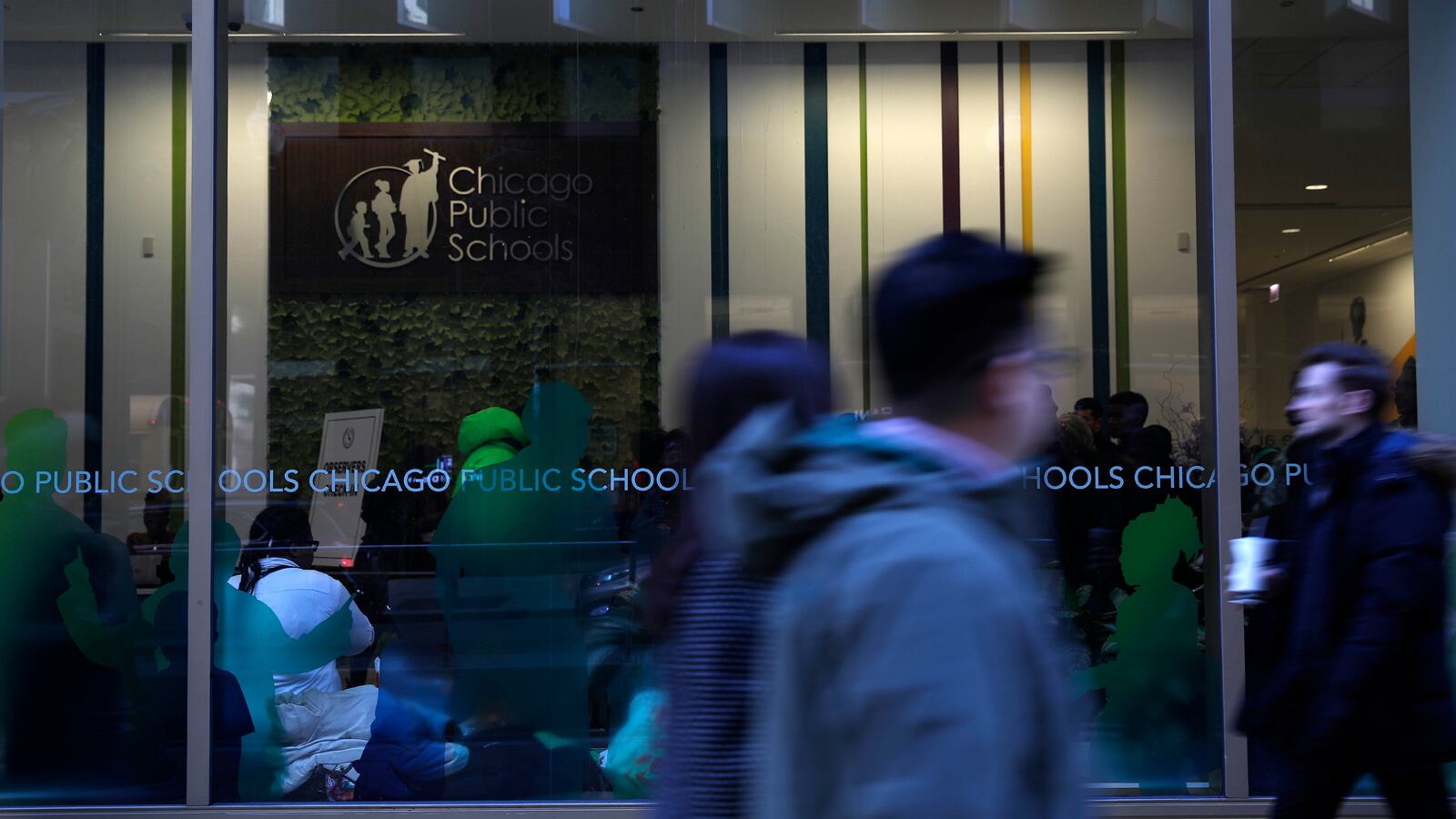When Chicago Public Schools rolled out a comprehensive inventory of its schools and programs earlier this fall, community activists feared that the district would wield the report to close yet more sparsely attended neighborhood schools, and bring in more charters.
But just the opposite happened this week. The school board rejected Intrinsic Schools’ proposal to open a new charter high school in the Loop next school year that would draw students from across the city, following staff advice drawn on the report, the Annual Regional Analysis.
The vote disappointed backers of Intrinsic charter school, which operates a top-rated high school in the Irving Park community on the Northwest Side. The problem, school officials explained, is that the plan didn’t mesh with the district’s map pinpointing which neighborhoods need such high-quality schools.
It turns out, the Loop doesn’t fit the bill.
“Build schools where CPS needs it, and then we’ll have a different conversation,” board President Frank Clark told crestfallen supporters of Intrinsic.
The school board and district leadership are under increasing pressure to justify any new school openings as enrollment continues to drop, and as neighborhood schools losing population call for investments and programs to better serve and attract more students. Declining enrollment was cited on Wednesday as one of the most formidable risks the school system faces.
The school board also voted Wednesday to deny two other charter school applications, although for reasons not tied to the Annual Regional Analysis, which the district compiled with assistance from school-choice group Kids First.
Since it was made public in September, the inventory of academic options, enrollment, and quality has become a tool used by the district to convene conversations about neighborhood-by-neighborhood options and, as the board meeting made clear Wednesday, to make hard decisions. Mary Bradley, executive director of the district’s department of innovation and incubation, said the Intrinsic proposal “does not align with needs identified in the ARA.”
“Where are the needs?” Clark asked Bradley following her presentation explaining the denial.
“Quality needs are mainly on the South and West sides of Chicago,” schools chief Janice Jackson said.
Intrinsic parent Lucy Weatherly said she was deeply disappointed. She touted the current Intrinsic school’s Level 1-plus rating and supportive school community.
But her plea and those of other school supporters did not sway the board.
The denial might have been the first board decision about a school’s fate explicitly tied to the Annual Regional Analysis, which divides the city into 16 planning districts, including the one Intrinsic had proposed a school, the Central Area Region. The area includes downtown, the Loop, and the South Loop.
The district touts the detailed report as a base of facts to aid planning and community engagement, and it has hosted a series of workshops in neighborhoods around the city to discuss the findings. (There are six meetings left.) But several groups have criticized the document as too reliant on data and school ratings and questioned the district’s intent, given that school quality and enrollment that has been used to justify school closings, turnarounds, and proposals for more charter schools.
On Wednesday, however, school officials used the report to argue that the Intrinsic charter proposal doesn’t meet any existing community need for additional high quality seats.
The majority of students who live in the Central Area Region or attend school there attend top-rated schools. The region’s student population is about 20 percent white, 30 percent Asian, 34 percent black and 11 percent Hispanic, and it’s the only region where white and Asian students outnumber black and Hispanic students. The area is gaining Asian students and losing black students, and the families are growing more moneyed.
The region houses two top-rated selective enrollment schools that draw population from across the city, Jones College Prep and Walter Payton College Prep.
The Intrinsic school would have been the fifth high school in the region and the third charter high school, after Noble-Muchin and Perspectives-Joslin, two citywide schools rated Level 1-plus and 2-plus, respectively.
The area’s population and enrollment have increased since 2014. That’s a sharp contrast with most communities, hence Chicago Schools’ much bemoaned enrollment crisis, which in 2013 was used to justify closing 50 schools.
The challenges posed by Chicago’s dwindling number of children wasn’t lost on school officials at Wednesday’s meeting, especially during a presentation Chief Financial Officer Jennie Bennett provided about the key risks facing the school district.
Clark asked her what the biggest problems were.
Even amid a state takeover of the troubled special education program and continued fallout over the student sexual abuse scandal, her first response was declining enrollment.

